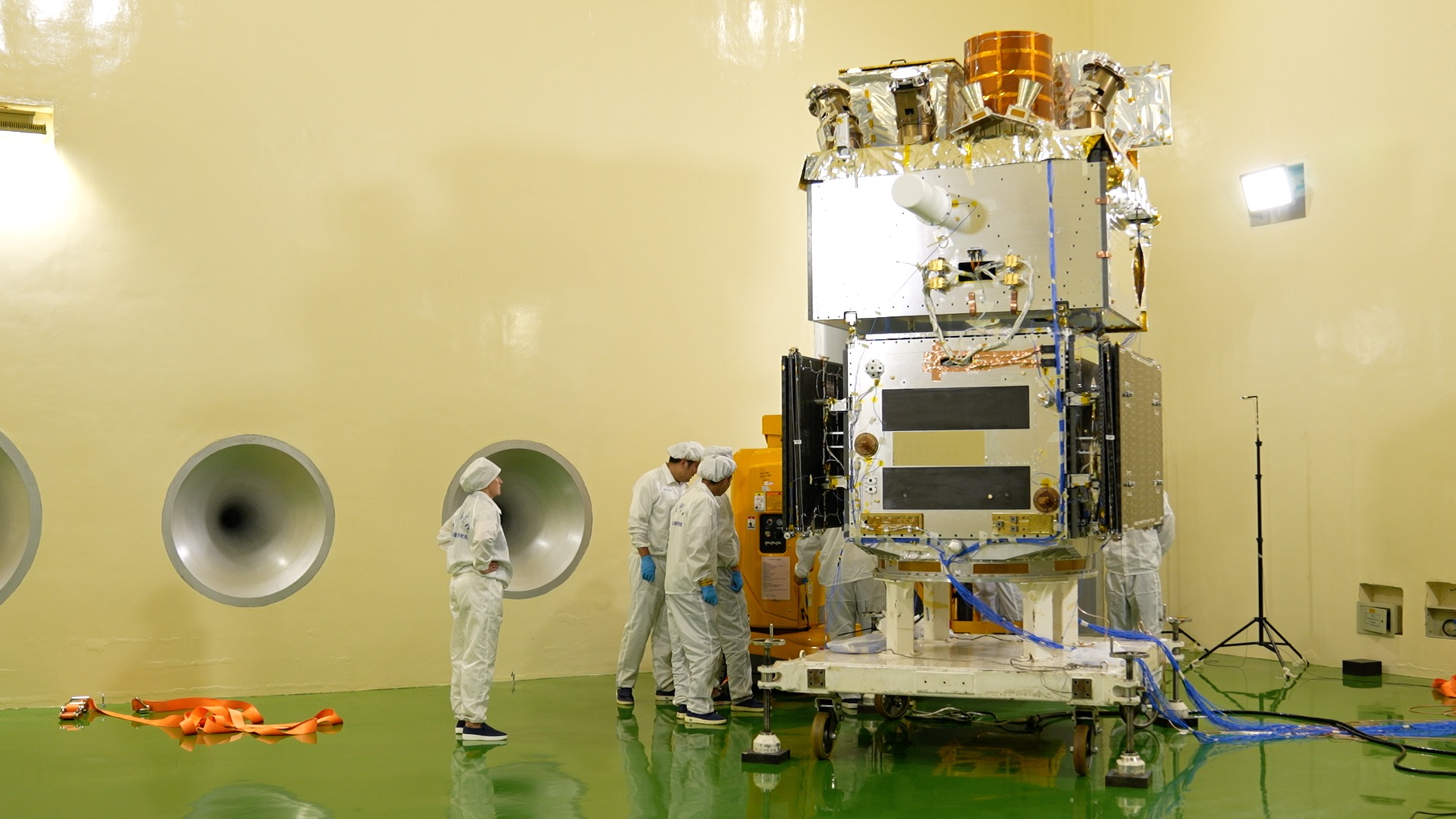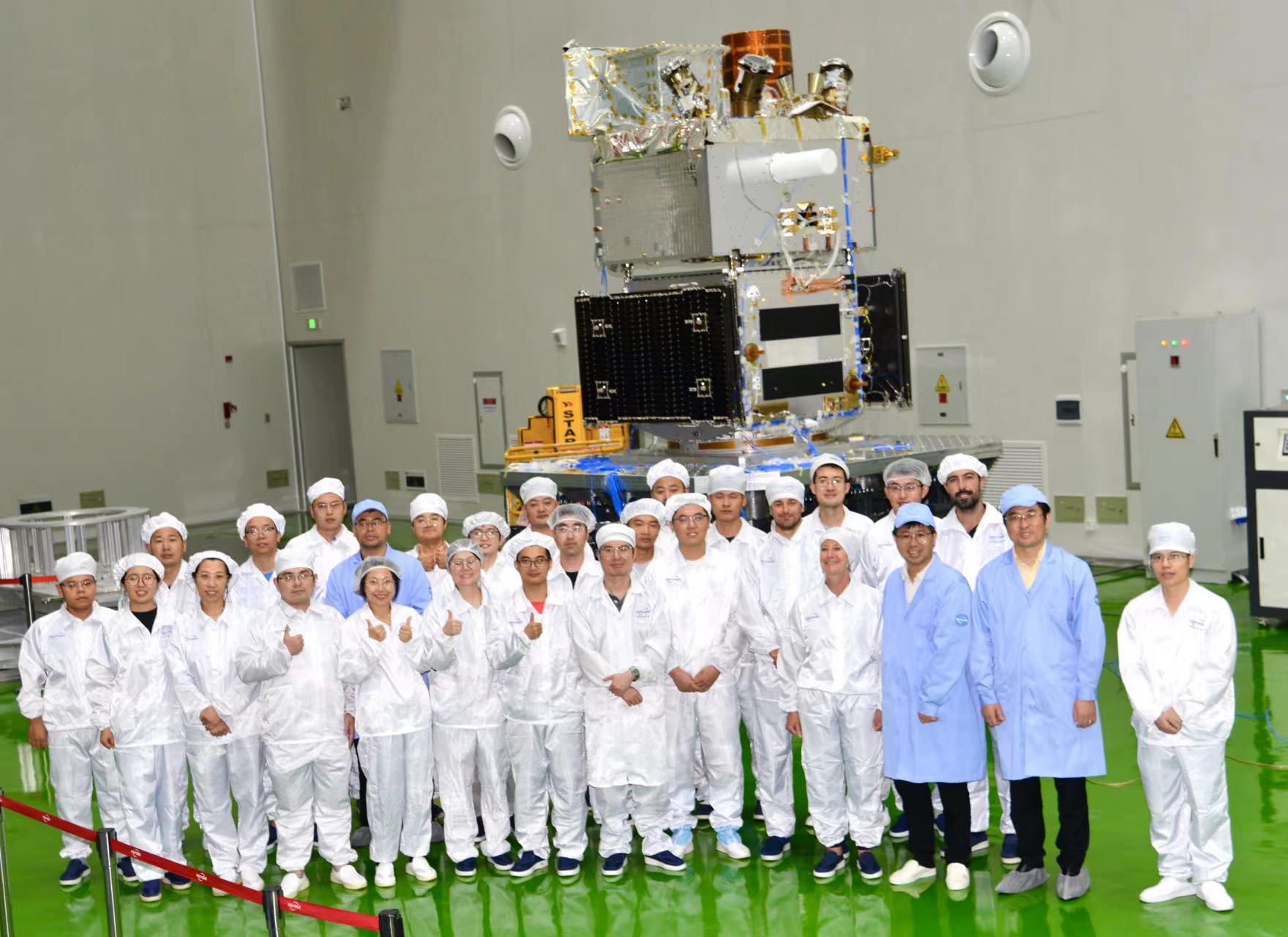Chinese and French scientists carried out acoustic and vibration tests on their co-developed satellite, the Space Variable Objects Monitor (SVOM) satellite, from August 11 to 16 in Shanghai.
The satellite is the first of its kind co-developed by the two countries designed to detect distant space phenomena, the gamma ray bursts.

Engineers prepare for the acoustic test of SVOM satellite on August 11, 2023. / CGTN
Engineers prepare for the acoustic test of SVOM satellite on August 11, 2023. / CGTN
There will be four scientific payloads on the satellite with two from China, the Visible Telescope and the Gamma Ray Burst Monitor. France will be sending two telescopes on the satellite, the ECLAIRs telescope and the Microchannel X-ray telescope.
The SVOM satellite was approved for development in 2006 by China National Space Administration and French space agency Centre National d'Etudes Spatiales (National Centre for Space Studies, CNES). The Innovation Academy for Microsatellites of the Chinese Academy of Sciences (CAS) is in charge of the satellite system.

Chinese and French engineers conducting acoustic tests at the Innovation Academy of Microsatellites of CAS in Shanghai on August 11, 2023./ CGTN
Chinese and French engineers conducting acoustic tests at the Innovation Academy of Microsatellites of CAS in Shanghai on August 11, 2023./ CGTN
Acoustic testing is crucial for satellites to understand its resistance under a high acoustic environment generated by the launcher during take off, according to French payload manager Karine Mercier from CNES.
The sensitive parts regarding acoustic noise excitations are the fragile ones like optics and the large ones like covers, radiators or solar arrays for example, Mercier said.
"This testing is quite stressful because we leave the satellite in the middle of the acoustic chamber without being able to do anything, but we have performed many calculations and tests for each satellite element before in order to be confident," said Mercier.

Scientists and engineers prepare for the vibration tests at the test hall of Innovation Academy of Microsatellites of CAS in Shanghai on August 15, 2023. /CGTN
Scientists and engineers prepare for the vibration tests at the test hall of Innovation Academy of Microsatellites of CAS in Shanghai on August 15, 2023. /CGTN
"After acoustic and sine vibration tests, we performed the satellite functional tests," said Zhang Xiaofeng, the deputy director of the Scientific Satellite Institute of the Innovation Academy for Microsatellites of CAS. "All the test results meet the technical requirements."

Chinese and French scientists of the SVOM satellite project, August 15, 2023. /CGTN
Chinese and French scientists of the SVOM satellite project, August 15, 2023. /CGTN
The satellite weighs a total of 950 kilograms(kg) with 450 kg as payload. It is expected to be launched in 2024.